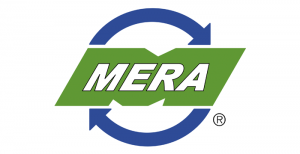 EDITOR’S NOTE: The guest editorial below is written by John Chalifoux, president and chief operating officer of the Motor & Equipment Remanufacturers Association (MERA). Earlier this month, the Michigan legislature finalized a bill that discourages the use of aftermarket and remanufactured parts used during vehicle repairs. The legislation directs that only Original Equipment (OE) parts can be used for several common categories of vehicle repairs, and would only allow for non-OE parts to be used if the consumer directs a repair facility in writing to use aftermarket parts. MERA and its parent association MEMA have been actively encouraging Michigan legislature to reconsider this action.
EDITOR’S NOTE: The guest editorial below is written by John Chalifoux, president and chief operating officer of the Motor & Equipment Remanufacturers Association (MERA). Earlier this month, the Michigan legislature finalized a bill that discourages the use of aftermarket and remanufactured parts used during vehicle repairs. The legislation directs that only Original Equipment (OE) parts can be used for several common categories of vehicle repairs, and would only allow for non-OE parts to be used if the consumer directs a repair facility in writing to use aftermarket parts. MERA and its parent association MEMA have been actively encouraging Michigan legislature to reconsider this action.
Editorial By John Chalifoux, MERA
Michigan bill 4344, as currently written, misses the mark. While the legislation promotes safety and consumer protection — which should be paramount on everyone’s agenda — the bill includes language that limits consumer choice and competition, giving preferential treatment to one distribution channel in the automotive aftermarket. For this reason, and to preserve manufacturing jobs in the state of Michigan, Gov. Snyder should make sure 4344 does not become law.
The U.S. automotive aftermarket has two distribution channels — the OE service (or dealer) channel and the independent aftermarket channel. Any part installed on a vehicle after it leaves the vehicle assembly plant is considered an aftermarket part. For example, if a car sits on a dealer’s lot all winter long, and then it needs a replacement battery—even before the car is sold — that car gets an aftermarket part from the dealer in the OE service channel. In many cases, a similar battery—manufactured by the same supplier—can be purchased in the independent aftermarket channel at the local auto parts store.
Many similar parts can be found in both aftermarket channels, sometimes with only the boxes being different. A vehicle manufacturer may brand the “genuine parts” box when the part is sold in the OE service channel; whereas, the original equipment supplier or retailer may have their brand on the box at your neighborhood parts store. And the merits of both channels don’t stop there. The independent aftermarket also offers high-quality parts that are supplied by a long list of independent parts manufacturers and remanufactures.
Two sections of 4344 are at issue. First, Sec. 7g unfairly prioritizes one channel over the other. As worded, the legislation limits competition and does not acknowledge the realities of the aftermarket channels. The section gives strong priority to OE service parts, greatly limiting consumer choice. Also, in addition to airbags, seatbelts and specific structural or crash parts, the section applies to engines and transmissions, for which a tie to the stated intent of safety is uncertain.
In Sec. 7b(c), the issue is related to the Magnuson-Moss Act, the federal statute which governs warranties on consumer products, including cars. The act specifically permits independent aftermarket parts to be installed on vehicles without vehicle owners risking the loss of their warranty rights. These rights have been strongly and consistently enforced by the U.S. Federal Trade Commission. Although the bill may not be a clear violation of Magnuson-Moss, it clearly violates the spirit of what the act was trying to protect.
It is understandable why a company — or any entity, for that matter — would seek to gain competitive advantage in the marketplace; however, utilizing legislation to limit consumer choice and favor one distribution channel over another goes too far. That’s why Gov. Snyder should veto this bill.
Contact John at [email protected].














